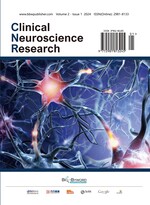Abstract
Neuropathic pain can occur as a result of injuries and diseases of the nervous system. Animal models using rodents have been developed and characterized to reveal plastic changes underlying neuropathic pain. However, structures and functions of some brain areas that are associated with pain perception differ between rodents and primates. Therefore, animal models using non-human primates, such as the macaque monkey, with brain structures and functions closer to those of humans are important for elucidating the mechanisms underlying pain in human patients. Recently, we measured brain activity using functional magnetic resonance imaging (fMRI) in a macaque model of chemotherapy-induced neuropathic pain and reported abnormal activation of pain-related brain regions including insular and secondary somatosensory cortices. In the monkey model of central post-stroke pain, moreover, the increased activation of pain-related areas as seen in the patients was confirmed by fMRI. These results indicate that fMRI measurement of brain activity combined with behavioral outcomes in macaque models could be used not only to understand the pathogenetic mechanisms but also to test therapeutic interventions for neuropathic pain.
References
Seifert F, Maihöfner C, 2009, Central Mechanisms of Experimental and Chronic Neuropathic Pain: Findings from Functional Imaging Studies. Cell Mol Life Sci, 66(3): 375–390. https://doi.org/10.1007/s00018-008-8428-0
Kaas JH, 2004, Evolution of the Large, Complex Sensorimotor Systems of Anthropoid Primates. International Journal of Comparative Psychology, 17(1): 34–52. https://doi.org/10.46867/ijcp.2004.17.01.04
Wallis JD, 2011, Cross-Species Studies of Orbitofrontal Cortex and Value-Based Decision-Making. Nat Neurosci, 15(1): 13–19. https://doi.org/10.1038/nn.2956
Bushnell MC, Ceko M, Low LA, 2013, Cognitive and Emotional Control of Pain and Its Disruption in Chronic Pain. Nat Rev Neurosci, 14(7): 502–511. https://doi.org/10.1038/nrn3516
Nagasaka K, Yamanaka K, Ogawa S, et al., 2017, Brain Activity Changes in a Macaque Model of Oxaliplatin-Induced Neuropathic Cold Hypersensitivity. Sci Rep, 7: 4305. https://doi.org/10.1038/s41598-017-04677-7
Hershman DL, Lacchetti C, Dworkin RH, et al., 2014, Prevention and Management of Chemotherapy-Induced Peripheral Neuropathy in Survivors of Adult Cancers: American Society of Clinical Oncology Clinical Practice Guideline. J Clin Oncol, 32(18): 1941–1967.
Shidahara Y, Ogawa S, Nakamura M, et al., 2016, Pharmacological Comparison of a Nonhuman Primate and a Rat Model of Oxaliplatin-Induced Neuropathic Cold Hypersensitivity. Pharmacol Res Perspect, 4(1): e00216. https://doi.org/10.1002/prp2.216
Grounds RM, Lalor JM, Lumley J, et al., 1987, Propofol Infusion for Sedation in the Intensive Care Unit: Preliminary Report. Br Med J (Clin Res Ed), 294(6569): 397–400. https://doi.org/10.1136/bmj.294.6569.397
Steinbacher DM, 2001, Propofol: A Sedative-Hypnotic Anesthetic Agent for Use in Ambulatory Procedures. Anesth Prog, 48(2): 66–71.
Garcia-Larrea L, 2012, The Posterior Insular-Opercular Region and the Search of a Primary Cortex for Pain. Neurophysiol Clin, 42(5): 299–313. https://doi.org/10.1016/j.neucli.2012.06.001
Yano M, Matsuda A, Natsume T, et al., 2019, Pain-Related Behavior and Brain Activation in Cynomolgus Macaques with Naturally Occurring Endometriosis. Hum Reprod, 34(3): 469–478. https://doi.org/10.1093/humrep/dey383
Shidahara Y, Natsume T, Awaga Y, et al., 2019, Distinguishing Analgesic Drugs from Non-Analgesic Drugs Based on Brain Activation in Macaques with Oxaliplatin-Induced Neuropathic Pain. Neuropharmacology, 149: 204–211. https://doi.org/10.1016/j.neuropharm.2019.02.031
Hama A, Natsume T, Ogawa SY, 2018, Pain-Related Behavior and Brain Activation in a Cynomolgus Macaque Model of Postoperative Pain. CNS Neurol Disord Drug Targets, 17(5): 348–360. https://doi.org/10.2174/1871527317666180515121350
Kumar B, Kalita J, Kumar G, et al., 2009, Central Poststroke Pain: A Review of Pathophysiology and Treatment. Anesth Analg, 108(5): 1645–1657. https://doi.org/10.1213/ane.0b013e31819d644c
Hosomi K, Seymour B, Saitoh Y, 2015, Modulating the Pain Network – Neurostimulation for Central Poststroke Pain. Nat Rev Neurol, 11(5): 290–299. https://doi.org/10.1038/nrneurol.2015.58
Krause T, Brunecker P, Pittl S, et al., 2012, Thalamic Sensory Strokes With and Without Pain: Differences in Lesion Patterns in the Ventral Posterior Thalamus. J Neurol Neurosurg Psychiatry, 83(8): 776–784. https://doi.org/10.1136/jnnp-2011-301936
Hanada T, Kurihara T, Tokudome M, et al., 2014, Development and Pharmacological Verification of a New Mouse Model of Central Post-Stroke Pain. Neurosci Res, 78: 72–80. https://doi.org/10.1016/j.neures.2013.09.005
Wasserman JK, Koeberle PD, 2009, Development and Characterization of a Hemorrhagic Rat Model of Central Post-Stroke Pain. Neuroscience, 161(1): 173–183. https://doi.org/10.1016/j.neuroscience.2009.03.042
Nagasaka K, Takashima I, Matsuda K, et al., 2019, Late-Onset Hypersensitivity After a Lesion in the Ventral Posterolateral Nucleus of the Thalamus: A Macaque Model of Central Post-Stroke Pain. Sci Rep, 7(1): 10316. https://doi.org/10.1038/s41598-017-10679-2
De Vloo P, Morlion B, van Loon J, et al., 2017, Animal Models for Central Poststroke Pain: A Critical Comprehensive Review. Pain, 158(1): 17–29. https://doi.org/10.1097/j.pain.0000000000000722
Nagasaka K, Takashima I, Matsuda K, et al., 2014, Development and Characterization of a Primate Model of Central Post Stroke Pain. Soc Neurosci Abstr, 241: 25.
Ohn SH, Chang WH, Park C-H, et al., 2012, Neural Correlates of the Antinociceptive Effects of Repetitive Transcranial Magnetic Stimulation of Central Pain After Stroke. Neurorehabil Neural Repair, 26(4): 344–352. https://doi.org/10.1177/1545968311423110
Peyron R, García-Larrea L, Grégoire MC, et al., 1998, Allodynia After Lateral-Medullary (Wallenberg) Infarct. A PET Study. Brain, 121(Pt 2): 345–356. https://doi.org/10.1093/brain/121.2.345
Seghier ML, Lazeyras F, Vuilleumier P, et al., 2005, Functional Magnetic Resonance Imaging and Diffusion Tensor Imaging in a Case of Central Poststroke Pain. J Pain, 6(3): 208–212. https://doi.org/10.1016/j.jpain.2004.11.004
Hosomi K, Shimohawa T, Ikoma K, et al., 2013, Daily Repetitive Transcranial Magnetic Stimulation of Primary Motor Cortex for Neuropathic Pain: A Randomized, Multicenter, Double-Blind, Crossover, Sham-Controlled Trial. Pain, 154(7): 1065–1072. https://doi.org/10.1016/j.pain.2013.03.016
